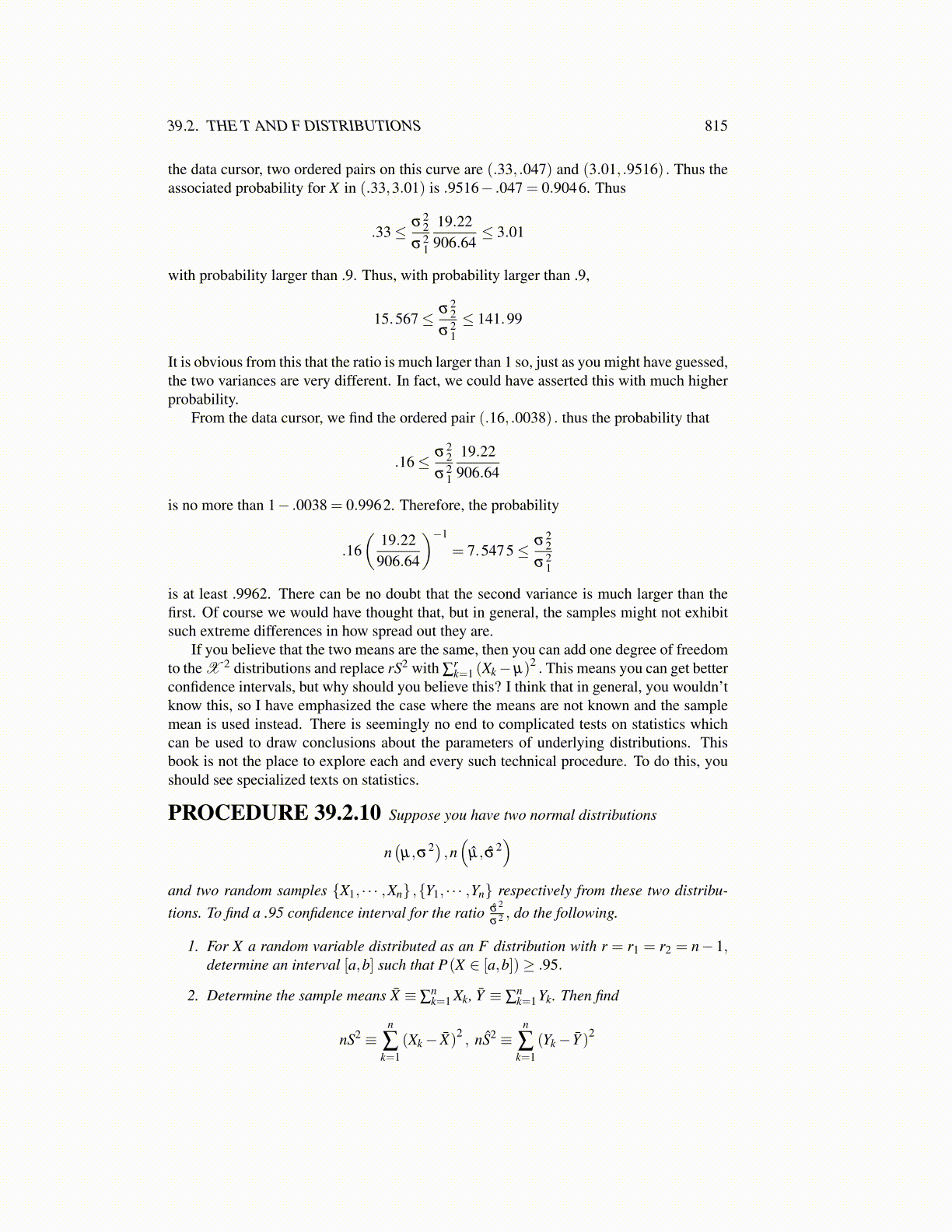
39.2. THE T AND F DISTRIBUTIONS 815
the data cursor, two ordered pairs on this curve are (.33, .047) and (3.01, .9516) . Thus theassociated probability for X in (.33,3.01) is .9516− .047 = 0.9046. Thus
.33≤ σ22
σ21
19.22906.64
≤ 3.01
with probability larger than .9. Thus, with probability larger than .9,
15.567≤ σ22
σ21≤ 141.99
It is obvious from this that the ratio is much larger than 1 so, just as you might have guessed,the two variances are very different. In fact, we could have asserted this with much higherprobability.
From the data cursor, we find the ordered pair (.16, .0038) . thus the probability that
.16≤ σ22
σ21
19.22906.64
is no more than 1− .0038 = 0.9962. Therefore, the probability
.16(
19.22906.64
)−1
= 7.5475≤ σ22
σ21
is at least .9962. There can be no doubt that the second variance is much larger than thefirst. Of course we would have thought that, but in general, the samples might not exhibitsuch extreme differences in how spread out they are.
If you believe that the two means are the same, then you can add one degree of freedomto the X 2 distributions and replace rS2 with ∑
rk=1 (Xk−µ)2 . This means you can get better
confidence intervals, but why should you believe this? I think that in general, you wouldn’tknow this, so I have emphasized the case where the means are not known and the samplemean is used instead. There is seemingly no end to complicated tests on statistics whichcan be used to draw conclusions about the parameters of underlying distributions. Thisbook is not the place to explore each and every such technical procedure. To do this, youshould see specialized texts on statistics.
PROCEDURE 39.2.10 Suppose you have two normal distributions
n(µ,σ2) ,n(µ̂, σ̂2
)and two random samples {X1, · · · ,Xn} ,{Y1, · · · ,Yn} respectively from these two distribu-tions. To find a .95 confidence interval for the ratio σ̂
2
σ2 , do the following.
1. For X a random variable distributed as an F distribution with r = r1 = r2 = n− 1,determine an interval [a,b] such that P(X ∈ [a,b])≥ .95.
2. Determine the sample means X̄ ≡ ∑nk=1 Xk, Ȳ ≡ ∑
nk=1 Yk. Then find
nS2 ≡n
∑k=1
(Xk− X̄)2, nŜ2 ≡
n
∑k=1
(Yk− Ȳ )2